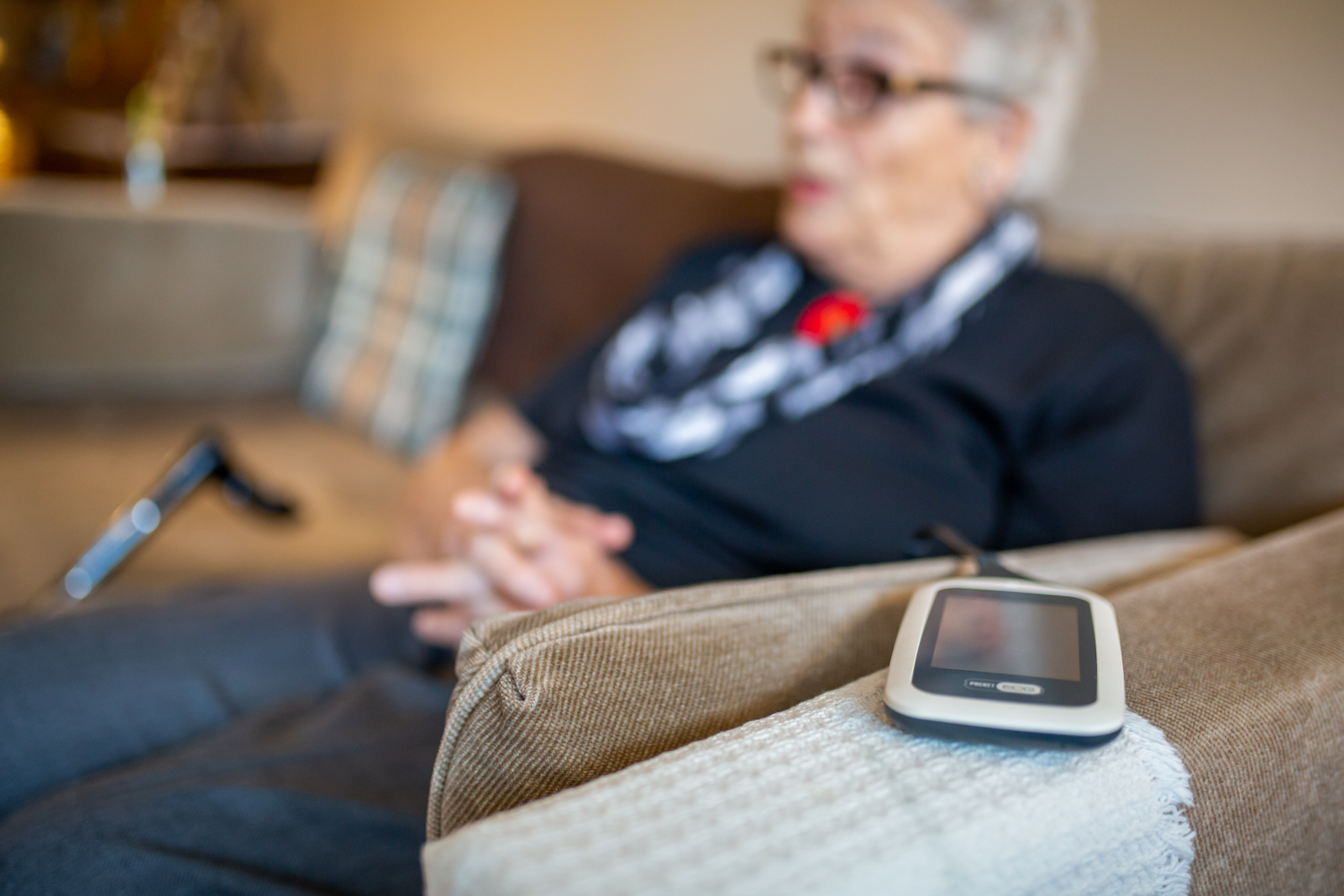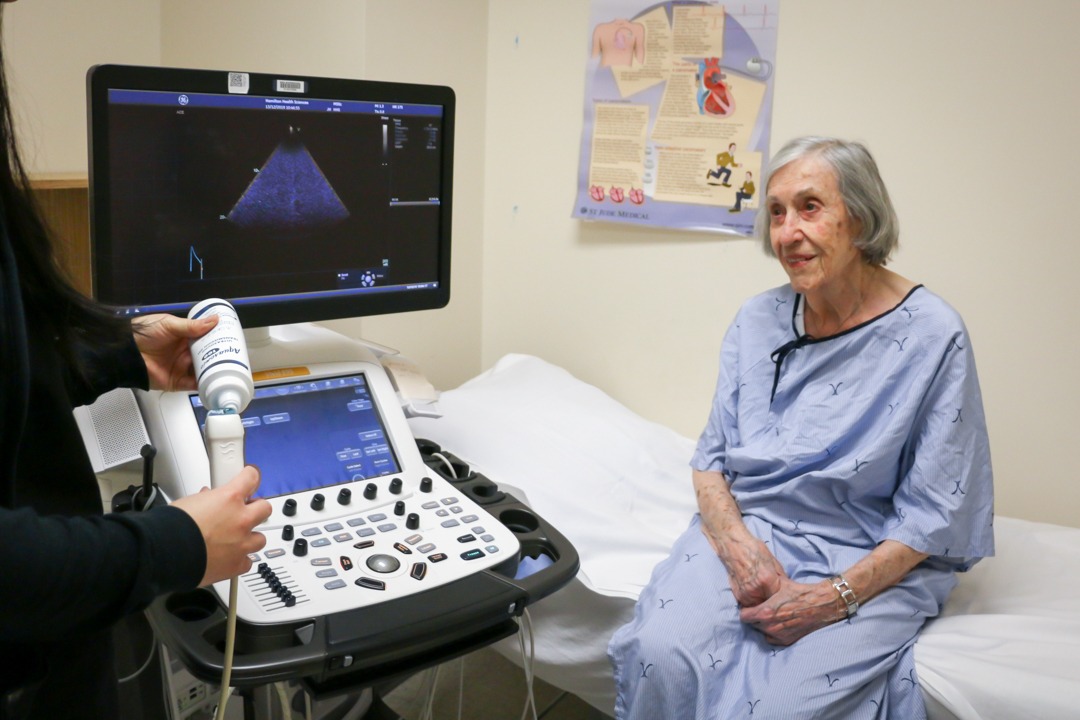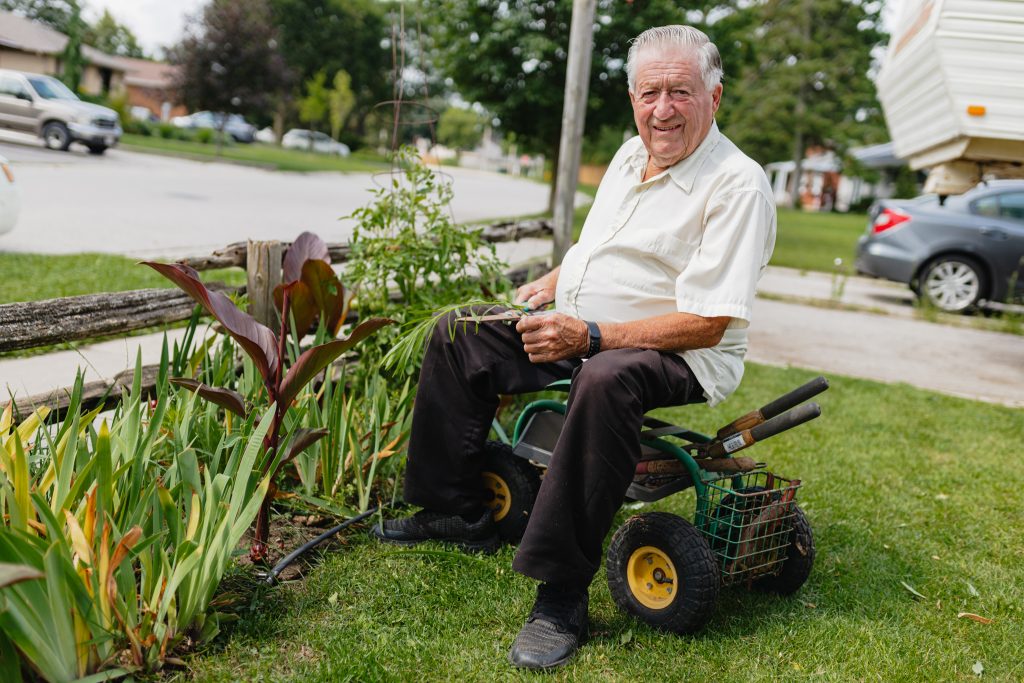
Remote monitoring of heart patients prevents an emergency
Last year, 85-year-old Brantford resident Richard Hayhurst had a hard time keeping up with yard work at his home. He often found he was so tired he needed to nap throughout the day. This was because his heart wasn’t functioning properly.
“It felt like my heart was quitting on me,” says Hayhurst. “Sometimes, I could count to four between heartbeats.”
An alternative to open heart surgery
Hayhurst was referred to Dr. Madhu Natarajan, interventional cardiologist and director of the heart investigation unit at Hamilton Health Sciences’ (HHS) Hamilton General Hospital (HGH), for a procedure called a transcatheter aortic valve implantation (TAVI). During this minimally invasive procedure, a catheter is inserted in the groin, travels up to the heart and replaces a degenerated heart valve. TAVI is an effective alternative to open heart surgery and allows patients to go home much sooner, usually within 24 hours.
“I went in around 8 a.m. for the procedure and was awake the whole time,” says Hayhurst. “It only took about an hour-and-a-half and I didn’t feel a thing. It was quick and simple and I went home the next morning.”
As members of the largest heart surgery program in Ontario, and a regional centre of excellence for cardiac care, cardiac surgeons and cardiologists work together at HHS to perform TAVIs on a regular basis, close to 300 procedures per year.
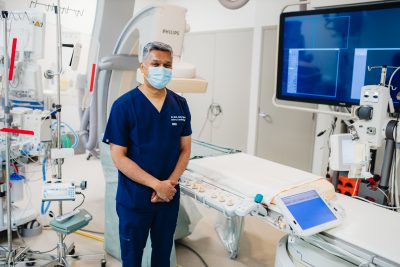
Dr. Madhu Natarajan in the heart investigation unit at the Hamilton General Hospital, where he performs TAVI procedures.
Remote heart monitoring
Heart arrhythmia, or an uneven heartbeat, is a common complication that can occur in TAVI patients, before or after the procedure, which can be fixed with a pacemaker. Dr. Natarajan and the team in the heart investigation unit at HGH are now sending TAVI patients home with a remote heart monitor even before their surgery.
The small device, designed by m-Health Solutions is worn around the waist and sends non-stop data to a central monitoring centre to review several times a day, with irregularities flagged for the cardiac team at HHS. If irregularities are found before the TAVI, a pacemaker can be implanted even before the valve procedure.
In Hayhurst’s case, no irregularities showed up before the TAVI, but five days afterwards there was evidence of heart arrhythmia. He was brought back into the heart investigation unit where doctors implanted a pacemaker to help control his heartbeat.
“I got a call from the hospital saying that I had an erratic heartbeat,” says Hayhurst. “I felt fine, so would never have known anything was wrong if it wasn’t for the heart monitor I was wearing.”
Hayhurst recently had his six-month checkup and got the all-clear. He’s thrilled that he has no problem keeping up with yard and garden work this year and enjoys spending his time outdoors.
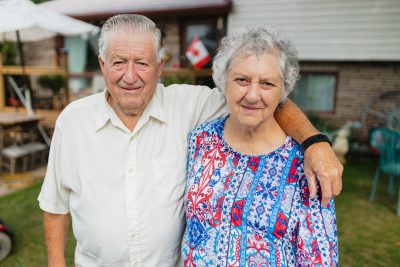
Richard, and wife Pat Hayhurst
REdireCT TAVI study
Dr. Natarajan has been leading a study called REdireCT TAVI to evaluate the remote heart monitoring process in TAVI patients. The study is being managed through the Population Health Research Institute, a joint institute of HHS and McMaster University and is funded by the Ontario Centres of Excellence – Health Technology Fund.
The study found that when an irregular heartbeat was detected, more than 50 per cent of the time it led to the patient needing a pacemaker. It also found that early detection of arrhythmia with the remote heart monitor avoided hospital re-admissions in the emergency department, which offset the cost of the equipment.
“It’s easier for patients if we can bring them in for a specific reason and prevent the need to come through the emergency department. It’s also a better use of our healthcare resources,” says Dr. Natarajan. “Since we know there can be issues with heart arrhythmia in these patients, we wanted to develop a system for early detection. It’s about more than having access to the remote monitoring technology. Much of the success of this project was related to building the appropriate clinical team of cardiologists specializing in TAVI and pacemakers to appropriately respond to the data we were receiving.”
Despite the average age of this patient population being 80 years old, the use of the remote monitoring technology posed no concerns, with 90 per cent usage.
What’s next?
The HHS heart investigation unit has implemented this process for all TAVI patients, not just study participants. Dr. Natarajan hopes to build a case that using remote heart monitors for TAVI patients is a process worth implementing across the country.
“Now that we’ve developed a system that works, it opens the door for evolving technologies to continue to make things easier for TAVI patients across the country.”

